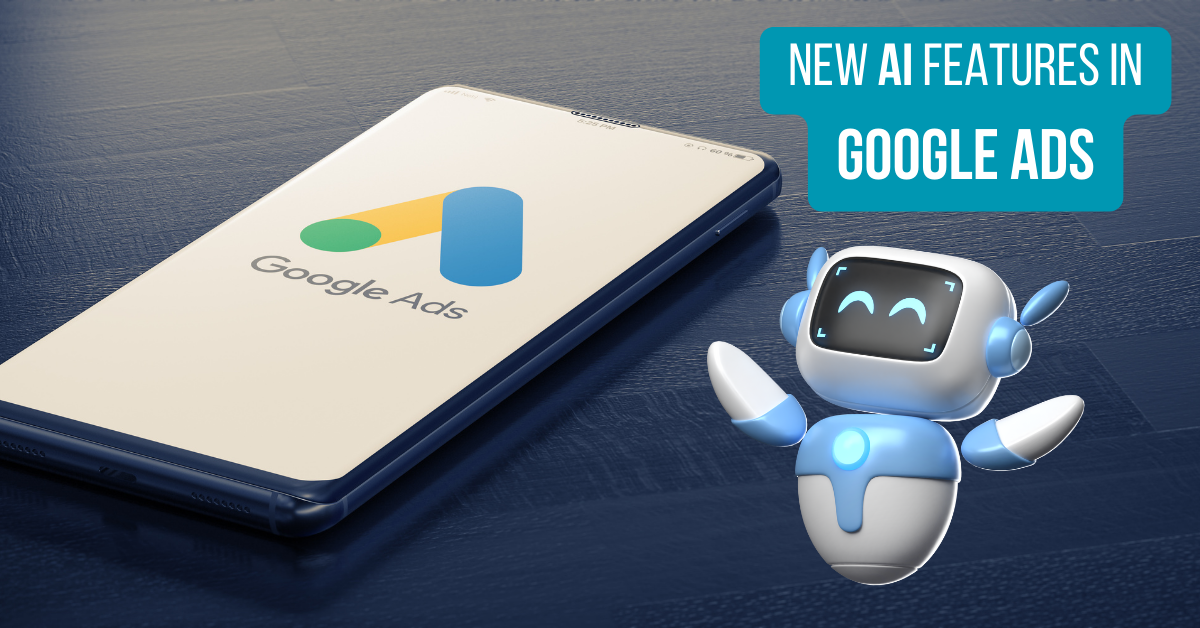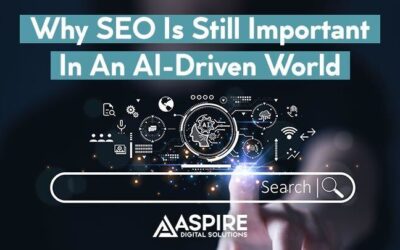Google Ads, a platform many of us have come to rely on for reaching our audience, is undergoing a serious upgrade. And the catalyst for this transformation? AI. But why does this matter for local businesses? In the simplest terms, AI’s integration into Google Ads is revolutionizing the way ads are created, targeted, and delivered.
For local businesses, whether its the charming bakery down the street or the tech startup in the center of the city, understanding this shift is going to be extremely important to having success with ads. It’s not just about keeping up – it’s about taking advantage of these advancements to connect more meaningfully with customers and drive growth and sales.
Why Integrate AI?
Google’s primary objective isn’t just to add some AI magic to its platform for the sake of innovation. Rather, it’s a strategic move to improve the entire advertising ecosystem.
The AI-Powered Shift: At its core, Google Ads is using AI to enhance its understanding of user intent. This means going beyond traditional keyword matching and exploring the nuances of what users are genuinely seeking. By analyzing vast amounts of data and using sophisticated machine learning algorithms, Google Ads can now predict and respond to user behavior with unprecedented accuracy.
The Outcome: The result of this AI integration is a more dynamic and responsive advertising platform. Ads become more relevant, targeting becomes more precise, and the overall user experience is enhanced. For advertisers, this translates to better campaign performance, improved ROI, and a deeper connection with their target audience.
The Broader Picture in Digital Ads: Beyond just improving ad placements and targeting, the integration of AI into Google Ads indicates a broader shift in the digital advertising industry. It’s a move towards more personalized and data-driven advertising strategies.

Breakdown of New Google Ads AI Features
Let’s take a look the new key features AI in Google Ads, so we can demystify the process a bit and understand its actual benefits for businesses and advertisers.
Smart Bidding
Overview: An automated bid strategy that harnesses machine learning to optimize for conversions in real-time.
Impact: By analyzing various signals like device type, location, and browsing behavior, Smart Bidding makes sure that your ads are placed optimally, maximizing your return on investment. For businesses, this means more efficient ad spend and better results without the manual hassle.
Responsive Search Ads
Overview: A flexible ad format that tests multiple headline and description combinations to determine optimal performance.
Impact: This feature streamlines the ad creation process, ensuring that the displayed ads resonate best with the target audience. It’s about delivering the right message at the right time, enhancing engagement and click-through rates.
Dynamic Search Ads
Overview: Instead of relying on manually set keywords, this feature uses Google’s web crawling technology to target relevant search queries based on your website’s content.
Impact: This ensures that your ads remain relevant to user searches, capturing potential traffic and reducing the chances of missing out on valuable keywords.
Performance Planner
Overview: A forecasting tool that predicts the potential performance of your ads based on varying budget amounts and settings.
Impact: By offering insights into potential outcomes, businesses can strategize with more confidence, ensuring that their ad spend aligns with their goals and delivers the desired results.
Audience Expansion Tool
Overview: This tool identifies potential audiences that share characteristics with your target demographic, broadening your campaign’s reach.
Impact: By tapping into new audience segments, businesses can expand their customer base and discover untapped markets, driving growth and increasing conversions.
Ad Strength Indicator
Overview: A real-time feedback mechanism that evaluates the effectiveness of your ad copy.
Impact: This tool ensures that businesses launch their campaigns with impactful and resonant ad content, setting the stage for success from the beginning.
Visual and Video Recognition
Overview: Google’s capability to analyze visual content, ensuring that ads are contextually relevant when placed within or alongside images and videos.
Impact: As visual platforms, especially YouTube, continue to grow in popularity, this feature ensures that ads are not only seen but are contextually aligned, enhancing user engagement and brand perception.

Implications of AI in Google Ads
The integration of AI into Google Ads isn’t just a technical upgrade – it’s a complete paradigm shift with big implications for businesses, advertisers, and, to be completely honest, the entire digital marketing landscape.
Dynamic Ad Placements & Targeting:
With AI in control, ad placements are no longer static. They’re determined in real-time, based on a number of factors from user behavior to current market trends.
What this means: For businesses, this means the advertising landscape is more fluid than ever. It’s important to be agile, adapting to these dynamic placements to make sure your ads remain effective and reach the right audience.
Enhanced Predictive Analytics:
AI’s ability to analyze vast amounts of data means it can predict user behavior with increasing accuracy.
What this means: Businesses can now anticipate market trends, user preferences, and potential challenges with much greater accuracy. This allows proactive strategy adjustments, making sure campaigns remain relevant and are having an impact.
Personalized User Experiences:
One of AI’s standout features is its ability to tailor experiences based on individual user preferences and behaviors.
What this means:: Ads are no longer one-size-fits-all. They’re personalized, aiming to resonate more deeply with users. For businesses, this means higher engagement rates, improved brand perception, and a better connection with their audience.
Data-Driven Decision Making:
With AI’s analytical capabilities, decisions are increasingly based on concrete data rather than intuition.
What this means: Businesses can make informed choices about their advertising strategies, reducing risks and optimizing for better outcomes. It’s about making decisions with confidence, backed by REAL insights.
Evolving Skill Sets & Expertise:
As AI becomes more integrated into Google Ads, there’s a growing need for expertise in AI-driven advertising.
What this means: Businesses may need to invest in training or collaborate with specialists to navigate this new landscape effectively. It’s about staying ahead of the curve and ensuring your team has the skills to harness the full potential of AI in advertising.
In short – the AI-driven evolution of Google Ads presents both challenges and opportunities. By understanding these implications, businesses can position themselves to succeed as the advertising market changes, using AI’s capabilities to drive business growth.

Stay Ahead of the Curve!
One thing is clear – we’re on the verge of a new era in digital advertising. In this era it is going to be data-driven insights, personalized user experiences, and dynamic ad strategies that result in the most success.
For local businesses, this isn’t just another tech update to be noted – it’s a call to action. The addition of AI into Google Ads is a unique opportunity to connect with your customers in more meaningful ways, and to really optimize your ad spend. But, as with any opportunity, it comes with some challenges. The complexities of AI demand a proactive approach, continuous learning, and, at times, expert collaboration.
As we look to the future, the role of AI in Google Ads is definitely going to grow even further. And for businesses ready to adapt and innovate, that future is filled with promise!








0 Comments